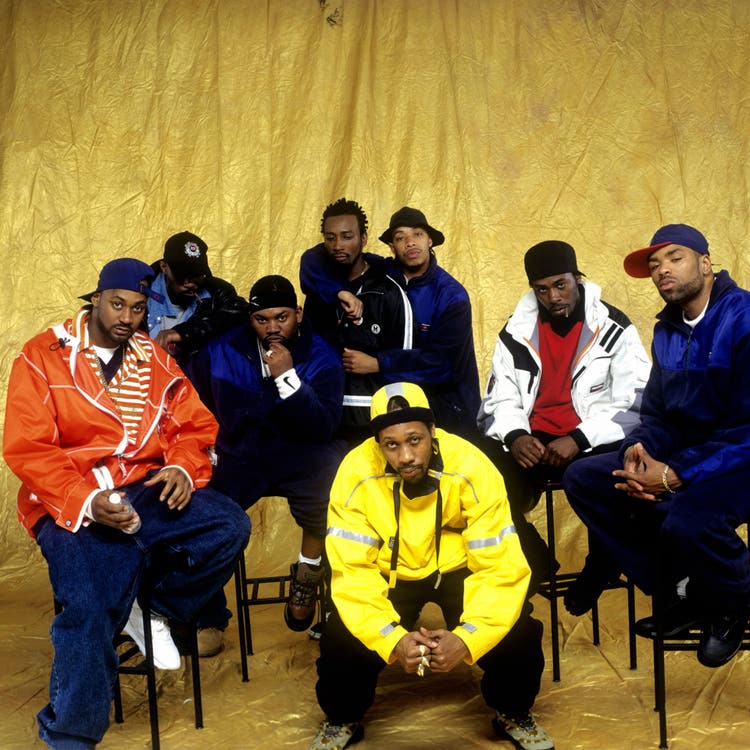
By the end of 1992 to mid 1993, New York City’s rap scene was in a stasis. Golden Era rap guards like Eric B. & Rakim waved a bittersweet adieu with the 1992 acerbic opus Don’t Sweat the Technique, while Big Daddy Kane attempted to win back old fans on Looks Like A Job For…, trading in his satin-clothed rap playboy image for a black hoody and hard rhymes. Public Enemy even reached their peak, releasing a b-sides album, all as the East began to fade in the thicket of smoke left behind Dr. Dre and Snoop Doggy Dogg’s The Chronic. In need of an energy shot, the Big Apple would soon get that in the form of a gritty nine-man troupe from out of the grimy project stairwells of Staten Island, NY.
Over 20 years, Wu-Tang Clan proved themselves to be “nothing to f—k with,” but that M.O. couldn’t have been made clearer than in 1993, the year in which they debuted on the scene with a little album called Enter the Wu-Tang (36 Chambers).
“Catch the blast of a hype verse,” Ghostface Killah would rap on “Bring da Ruckus,” the album’s opening song. “My glock bursts, leave in a hearse, I did worse.” Hailing out of Shaolin, Wu-Tang Clan, emerged with a haymaker of a debut that reshaped the hip-hop landscape and helped restore New York pride. The power of this project was best described by one glowering mission statement: “Wu-Tang Clan Ain’t Nothing to F*ck With.” Dark, abrasive, and uncompromising, the 54-minute-long opus shook the rap scene to its core, shifting the East from its customary dresscode of shell-toe Adidas and dookie rope chains to a gruffer look that was detailed by army fatigues and Timberland boots. Hip-hop had already been hard, but the emergence of 36 Chambers ushered in a gritty era.
“Make way for the merge of traffic,” GZA raps on bumrushing anthem “Clan In Da Front.” In the same song, he fitting adds, “You can’t f—k with those in the major leagues.”
No one could’ve predicted the game-changing dominance by the crew after first listen of 36 Chambers, especially when the album’s first 12 minutes comprised of the numbing gut-jabs “Bring Da Ruckus,” “Shame On A N*gga” and “Clan In Da Front.” Drenched in Five Percenter ideology, good ol’ Kung-fu and comic book admiration, the album announced the arrival of a crew that would infect the hip-hop world with an incessant virus — a “virus” that sounds and feels like the bottom of a Timberland boot stomping in a muddy puddle.
Over 20 years later, that “virus” continues to cause outbreaks of the following testimony: Wu-Tang Clan ain’t nothing to f with.
As this month marks Black Music Month, be sure to tune into REVOLT TV on Monday, June 4, at 9 p.m. ET, to see Wu: The Story of the Wu-Tang Clan, a special television premiere dedicated to their remarkable journey from the slums of Staten Island in the 1990s to the top of the hip hop world. In preparation for the special, revisit the source of their dominant reign, Enter the Wu-Tang: 36 Chambers, which celebrates 25 years of dominance in November.